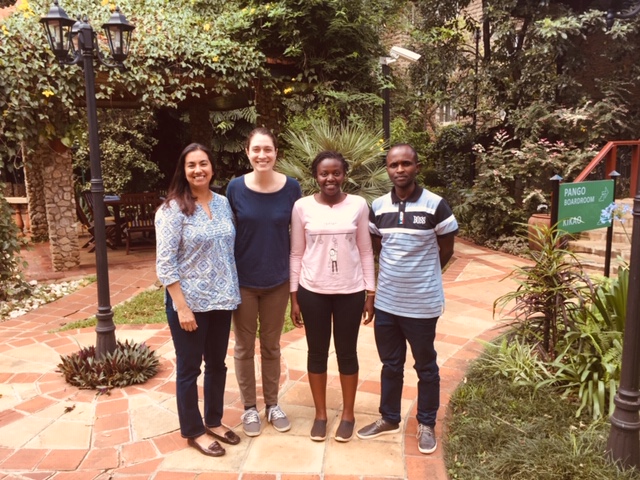Uptake Motives

By: Kyle Poorman
Consortium for Innovation in Post-Harvest Loss and Food Waste ReductionIowa State UniversityIn December 2019, a team from the University of Maryland returned to Kenya for a second round of 50 intensive, qualitative interviews. Affiliates of the Ed Snider Center for Enterprise & Markets, the team focused on analyzing the impact of the Rockefeller Foundation’s YieldWise Initiative in the Kenyan mango value chain. This round of interviews was informed by an earlier trip in 2019 that yielded a set of lessons learned that was subsequently published as a research blog on the Consortium website. This portion of the study aimed to dig deeper into those lessons and to come to a better understanding about the uptake of YieldWise interventions and even the motivations and behaviors behind choices to adopt and continue to deploy the interventions.
Dr. Sonali Shah and Audra Wormald led a team that interviewed a cohort of people that worked throughout the mango value chain in Kenya. The main group interviewed were mango farmers, representing 45 of the 50 interviews. This set of interviews yielded a range of initial impressions about the farmers ability, willingness, and motivation behind adopting the interventions. These interviews yielded a baseline understanding that the amount of salable mangoes had increased, one of the goals of the YieldWise intervention. If farmers were able to find a market for those mangoes, this has the ability to increase their incomes.
Shah and Wormald also identified that potential adoption was influenced by the ability to invest resources or time to procure training or technologies and believe that farmers are making rational, calculated choices based on what they could afford. Resource constrained farmers expressed a willingness to engage with interventions, but had a difficulty attending training or procuring necessary technologies or tools because of their resource situation. This finding does not mean that sufficiently resourced farmers might automatically adopt or continue to deploy technologies based upon an ability to afford the interventions. It just means there is a real financial component to deploying these technologies.
The ability to finance an intervention was one important variable, however Shah and Wormald’s also identified some interesting motivational divergence amongst farmers. The team believes that if a farmer is sufficiently resourced, their investment time horizon might explain some uptake. Those farmers that viewed the mango farm as a longer-term family investment were motivated to seek out YieldWise training opportunities and continue to deploy the interventions. This set of motivated participants would proactively engage with YieldWise field agents and it seems as though the field agents gravitated toward aiding these motivated farmers. This relationship between motivated farmer and field agents seemed to be beneficial for intervention adoption and continuation of using the techniques.
This development of relationships between field agent and farmers also illuminated the need to develop ongoing support structures. The interviews seem to bear out that farmers are in need of ongoing support in dealing with different challenges including ongoing pest problems and deployment of chemical treatments.
Going behind adoption of better on farm management and deploying new technologies, a real challenge is getting connected to the market or a good buyer who harvests correctly and pays a good price for the mangoes. With higher amounts of mangoes to be sold, the value of being able to actually find a buyer is essential. The initial impression of the study is that on farm technology adoption is relatively straightforward while developing links to markets is much more difficult.
Because the YieldWise initiative aimed to work throughout the mango value chain to deal with multiple bottlenecks to reduce loss and increase farmer incomes, the initial impression from the interviews is that the initiative represented a ‘turnkey’ approach that had success because it looked across the value chain and developed systemic solutions to achieve the overarching goals. Those systemic solutions seemed to be sticky and many mango farmers saw value in engaging with the initiative because it offered them a long-term value proposition.
The University of Maryland team will be analyzing data from both 2019 research trips and aims to have more publications out later in 2020.
